We began our visit with an introductory video (very well done) that provided the backdrop for the start of WWI including the assassination of Archduke Franz Ferdinand of Austria.
Compulsory military service existed in Germany, France, and Russia even during peacetime. Tensions were escalating between the rich and poor; Catholics and Protestants; socialists, conservatives, and liberals; and ethnic minorities were struggling for their own national identities as the industrial revolution spread across the globe. Europe was the economic center of the world with Germany's economy growing faster than any other. Economic competition among the three most industrialized nations, Britain, France and Germany, created the first modern world war.
The war began on July 28, 1914, and ended November 11, 1918. The museum conveys the story of the war through exhibits that are organized in chronological order. Once the war began, there was a chain reaction of countries joining the conflict and declaring war on one another.
The French found themselves in a stalemate after the failure of the German invasion in 1914. Both sides dug in building trenches to hold their respective positions. By the end of that year, 400 miles of trenches extended across Belgium and France. For the following four years, there was very little change to the borders although many died during that period. An entire network of trenches were built by both sides to provide supplies, artillery, troops, etc., to the front lines.
By 1917 there were 35,000 miles of trenches in Europe extending from the English Channel all the way to the Swiss border. Millions of men fought and died in them from combat, disease, and cave-ins. The water was sometimes waist deep and the mud nearly unbearable. The Germans, with less man power, had the most sophisticated trenches. Barbed wire up to 50' deep with coils 8' high was placed in front of trenches that were sometimes 30-40' deep. The museum has created an awesome exhibit behind a wall with multiple view points to illustrate what trench must have been live for the troops.
The museum has an extensive collection of weaponry including cannons, rifles, handguns, grenades, knives, and bayonets from the war.
German Fokker D.VII (reproduction) was one of the best fighting scout planes in 1917. The French-made Renault FT 17 Tank (1917) was the first tank with a fully-rotating turret and was manned by two soldiers.
Germany engaged in extensive submarine warfare during WWI. When the war began, they had but 20 U-boats in their arsenal. There was major concern that their enemies would blockade their ports limiting wartime supplies. The Lusitania was sunk by the Germans in 1914 with 128 Americans (and many other civilians) aboard. Outrage caused Germany to agree to cease these attacks. By 1917 Germany had a total of 140 submarines when the Kaiser re-established unrestricted warfare against all ships, military and civilian alike. Obviously, this caused great concern for the Allies and was a major contributing factor to the US declaring war on Germany in 1917. Below is a model of a U-2, torpedo, and mine.
The Horizon Theatre shows a 15-minute program that is a dramatic presentation of the war. Benches are provided for the large-screen production.
Interactive Tables provide additional details about the war (weaponry, communications, aircraft, etc.) and the times (poetry, music, historic voices, etc.) Very cool technology is used to present the information.
Prior to 1917, the US had not participated in European politics or foreign wars. The Zimmerman Message, that outlined the German Foreign Ministers invitation to Mexico to join the war as a German Ally, the was intercepted and decoded by the British, In return, Germany offered to finance Mexico's war to reclaim Texas, New Mexico, and Arizona. The message was shared with President Wilson who in turn made it public. In conjunction with the unrestricted submarine warfare, the US declared war on Germany in April of the same year. The US drafted 2.8M men and was sending 10,000 a day to France by 1918.
20,000 Harley-Davidson Motorcycles (1917) were sent to Europe to support the Allies. Civilian motor vehicles wer put to use at home and in Europe including this Ford Model T Truck (1918) Light Delivery Body. American medical equipment and personnel were also deployed along with the troops.
US Field Guns used during the war, US military uniforms, and war posters.
The end of the war has various dates: the armistice began November, 11, 1918; the Versailles Treaty was signed in 1919 (over 1,000 officials from 30 nations attended the conference); but the last formal peace agreement was not finalized until 1923. The European nations ended the war with an unstable peace. The US emerged from the war as a world power, but at the time had no interest in participating in world wide politics.
Summary of losses:
Allied Forces Central Forces
- Dead 5,525.000 4,886,000
- Wounded 12,831,500 8,388,000
- Missing 4,121,000 3,629,000
- Total 22,477,500 16,403,000
We took the elevator to the base of the Liberty Tower where two additional exhibition buildings are located. Below are images from Memory Hall where names of those from Missouri who perished in the War are engraved.
The building on the other side of the tower has an exhibit entitled, Sand and Snow 1915.
The sphinxes guarding the south entrance represent:
- Memory, facing east towards the battlefields of Europe. Memory has its eyes shielded from the horrors of war.
- Future, facing west away from war toward peace, where hope lives. Its eyes are shrouded to symbolize the unknown nature of the future.
We took a second elevator and then walked up the 45 steps to reach the observation deck of the Liberty Tower. The tower is 217' tall and was dedicated in 1921. Building of the tower occurred between 1923 and 1926. The guardian spirits around the tower symbolize Honor, Courage, Patriotism and Sacrifice.
There is so much information at you fingertips in this museum. Many of the displays are interactive and incredibly well done. Admission is $15/adult, $12/senior and it is totally worth it.
A cafe is located on-site and there is a lovely gift shop as well.
See their website for additional information, hours of operation, the research and education centers, and more.
Website: www.theworldwar.org
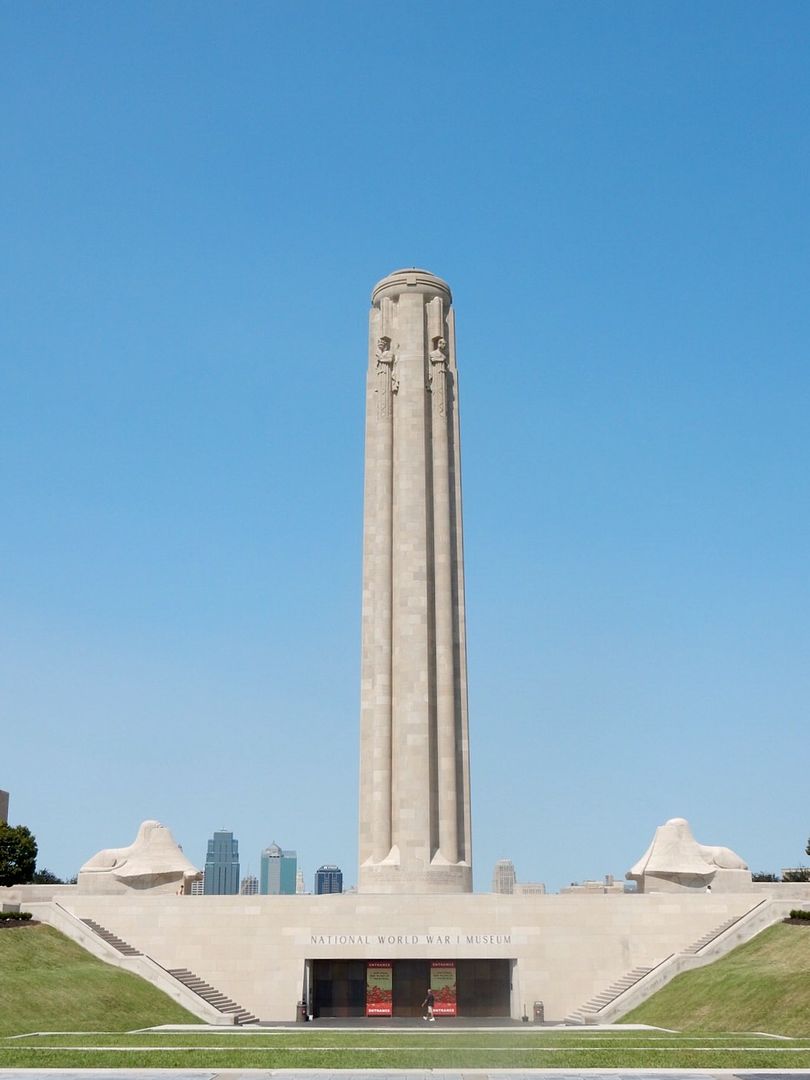


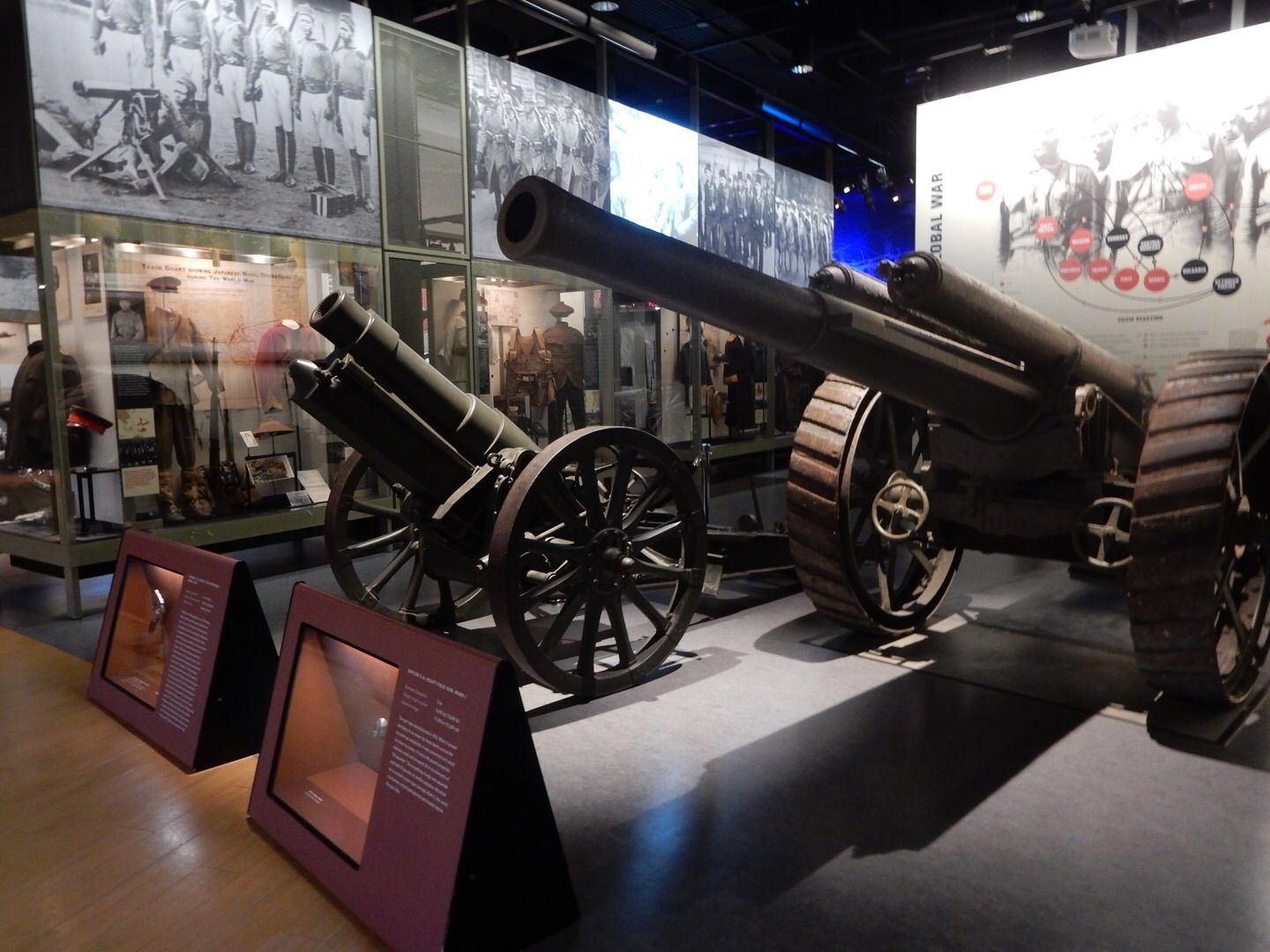
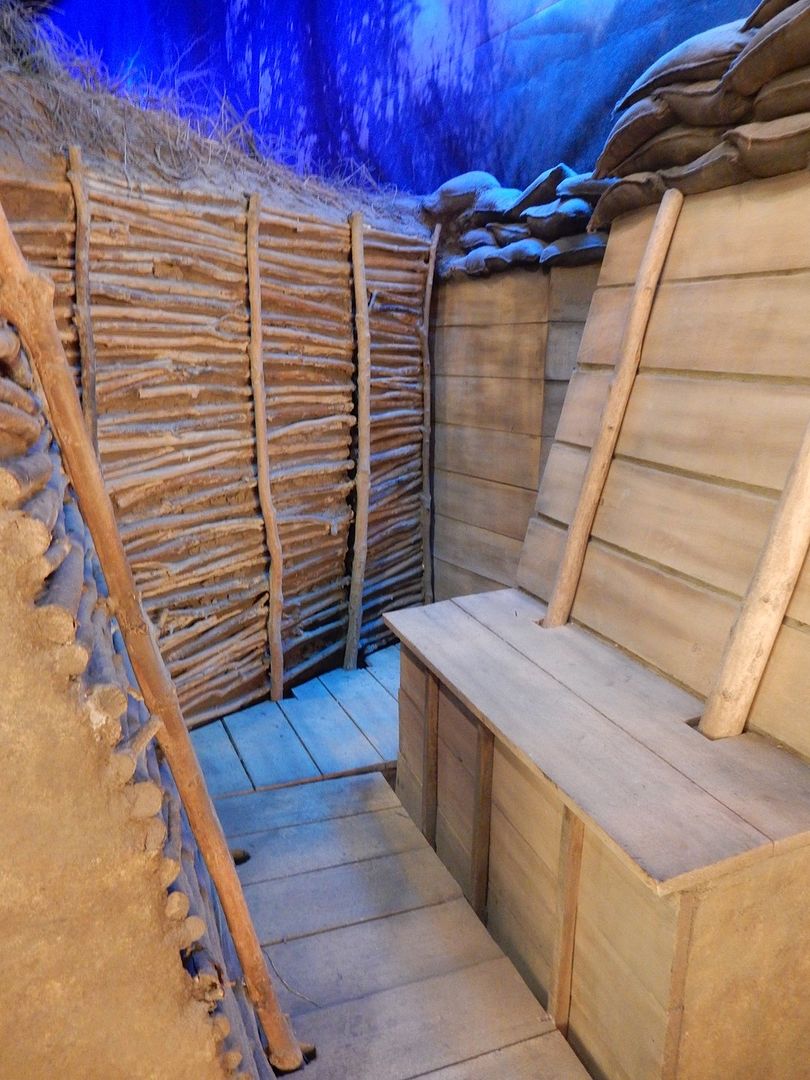
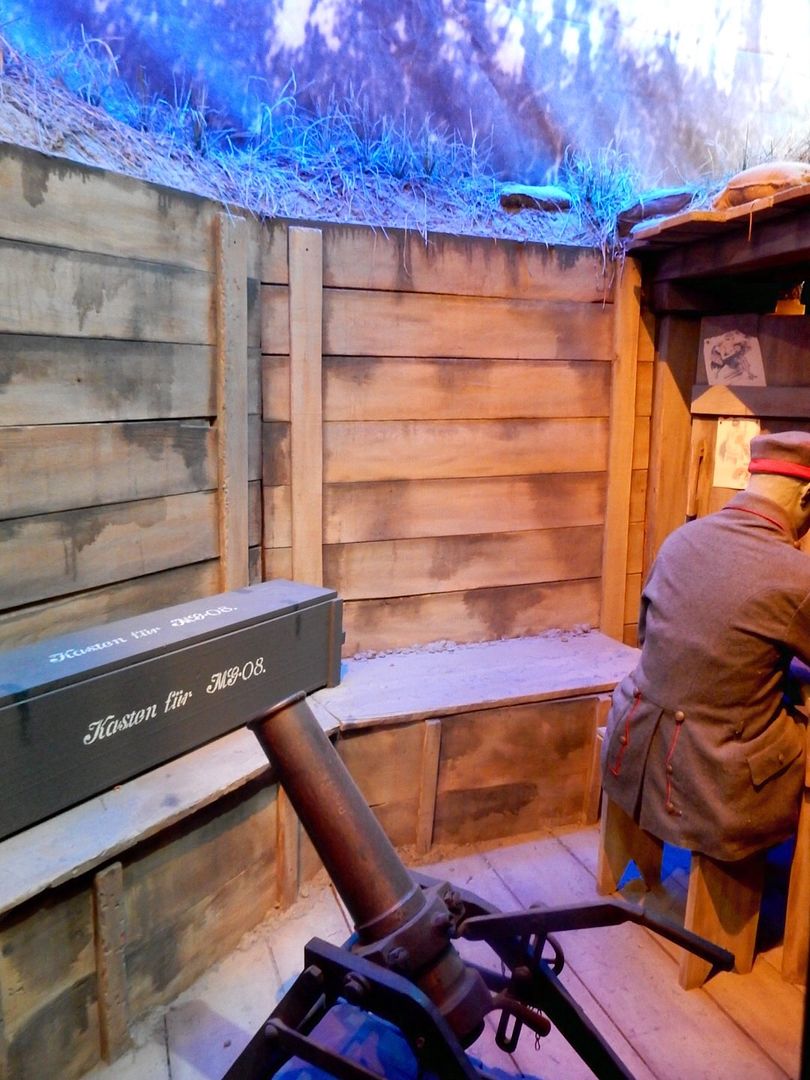
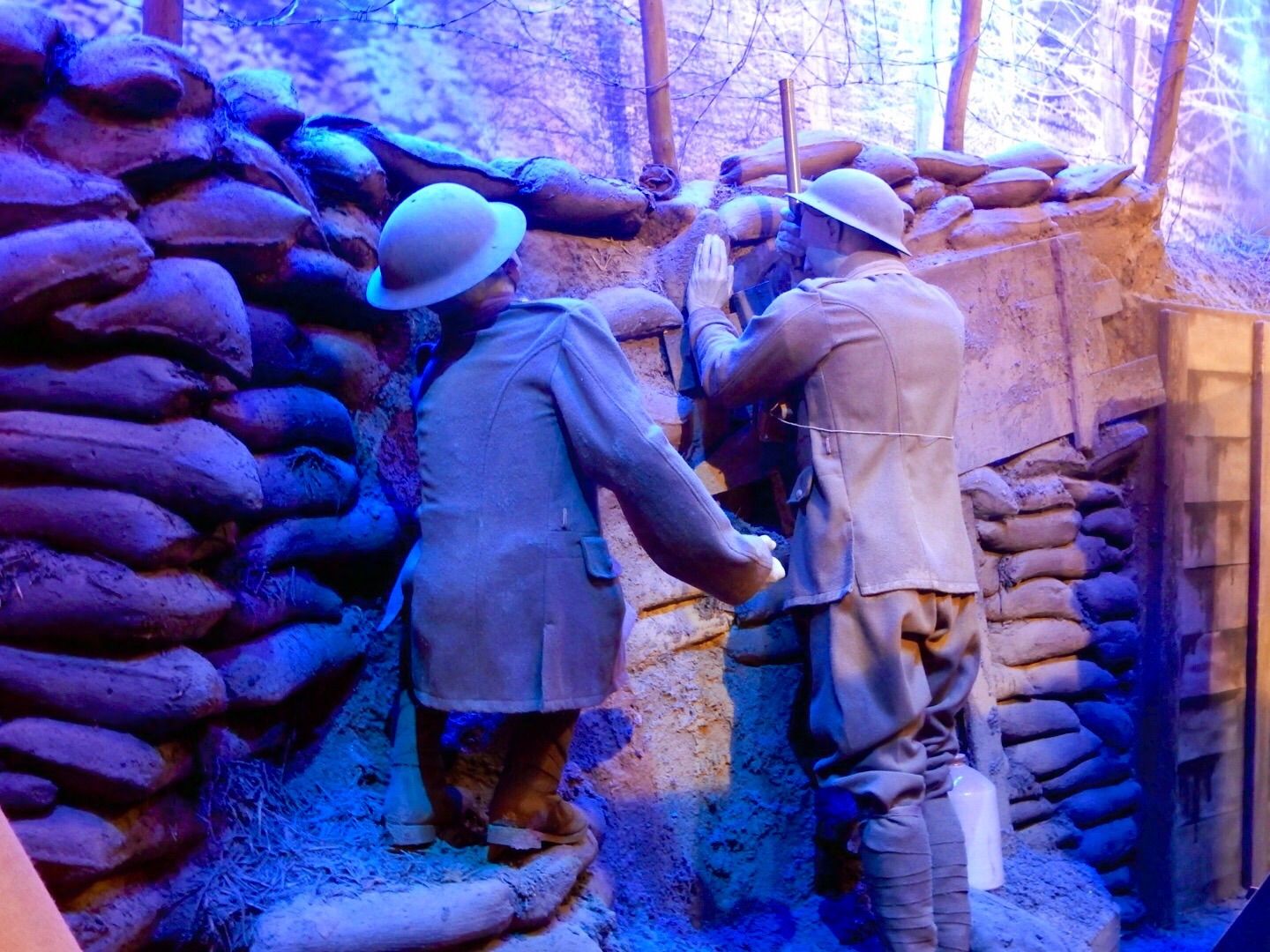
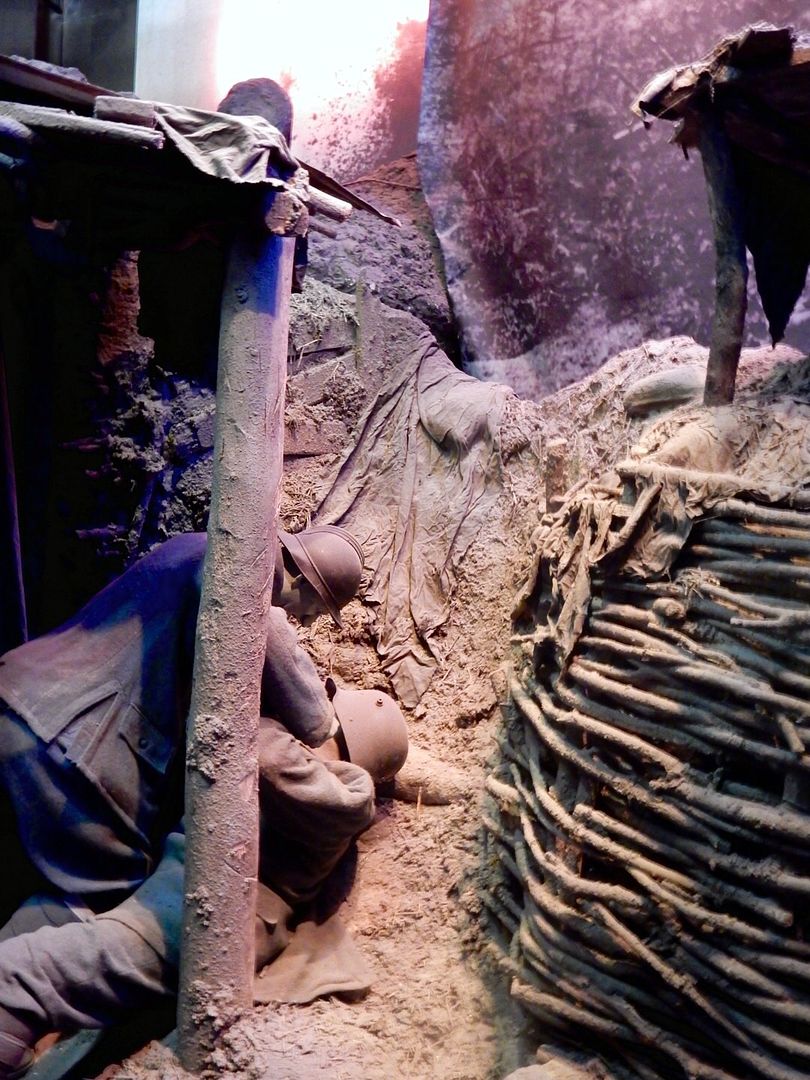
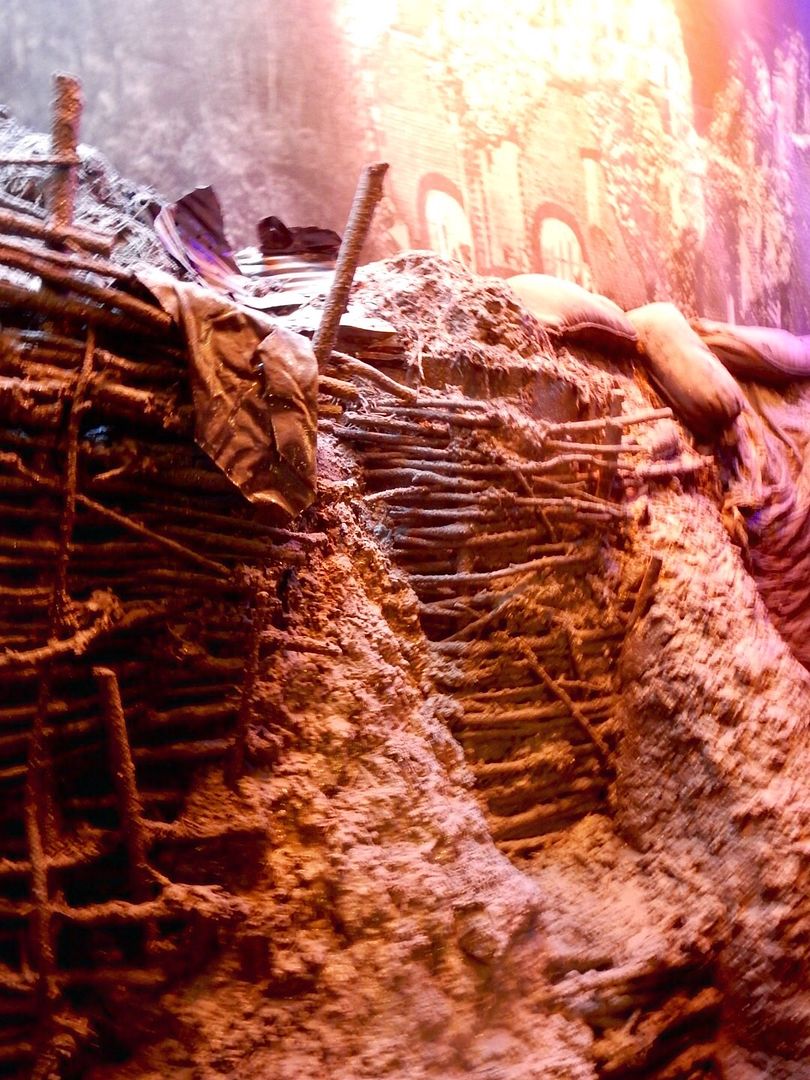
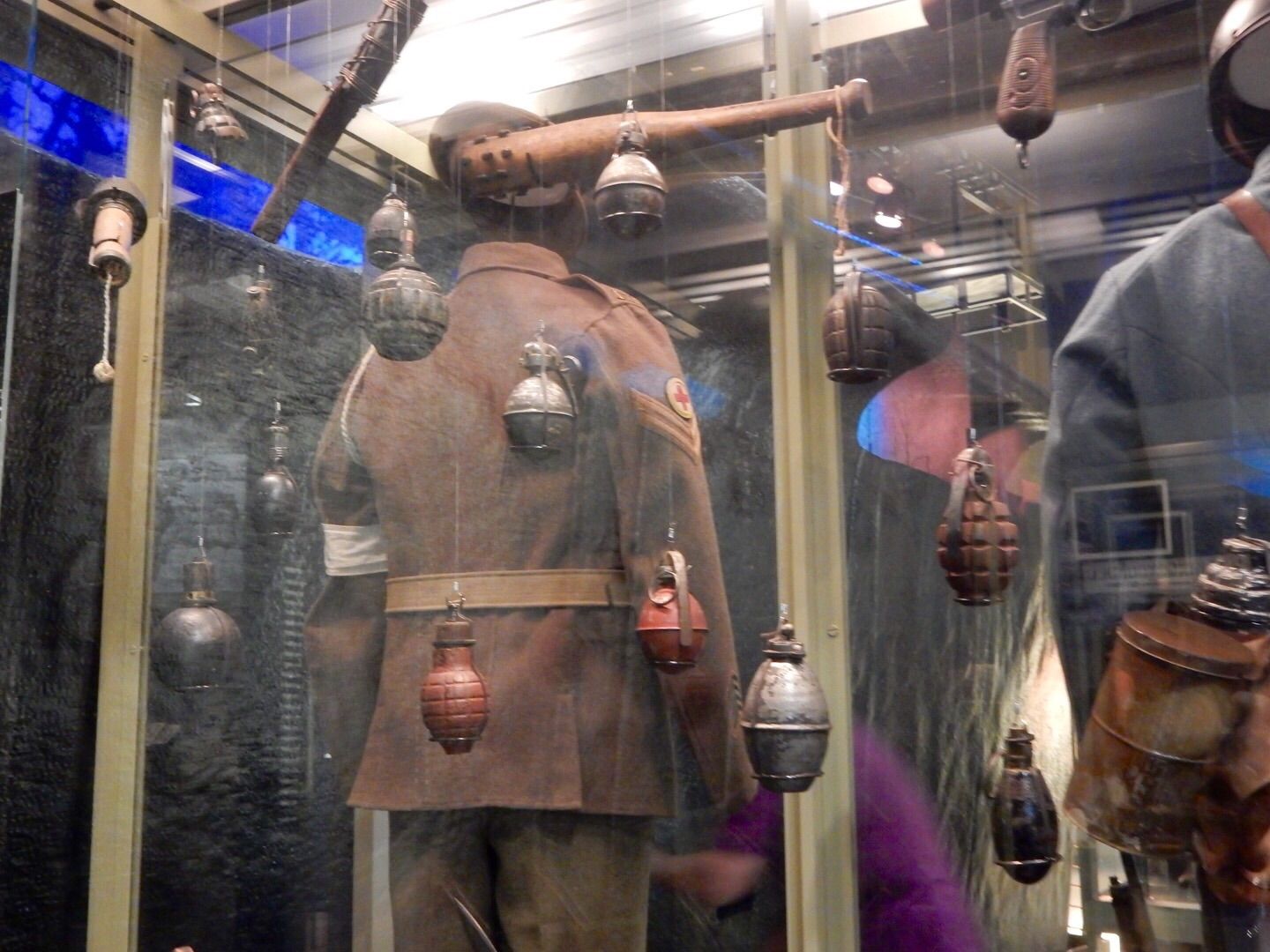



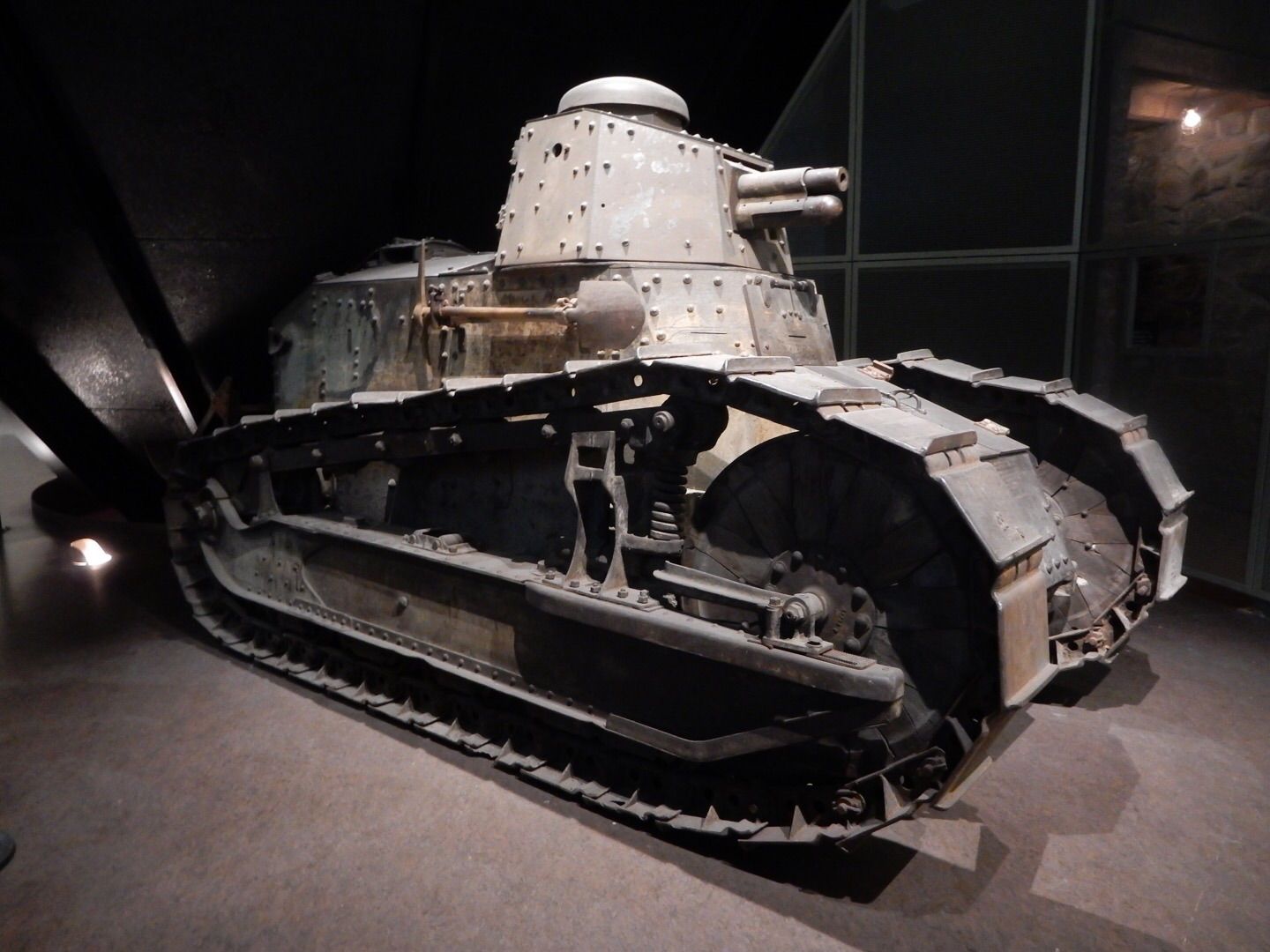

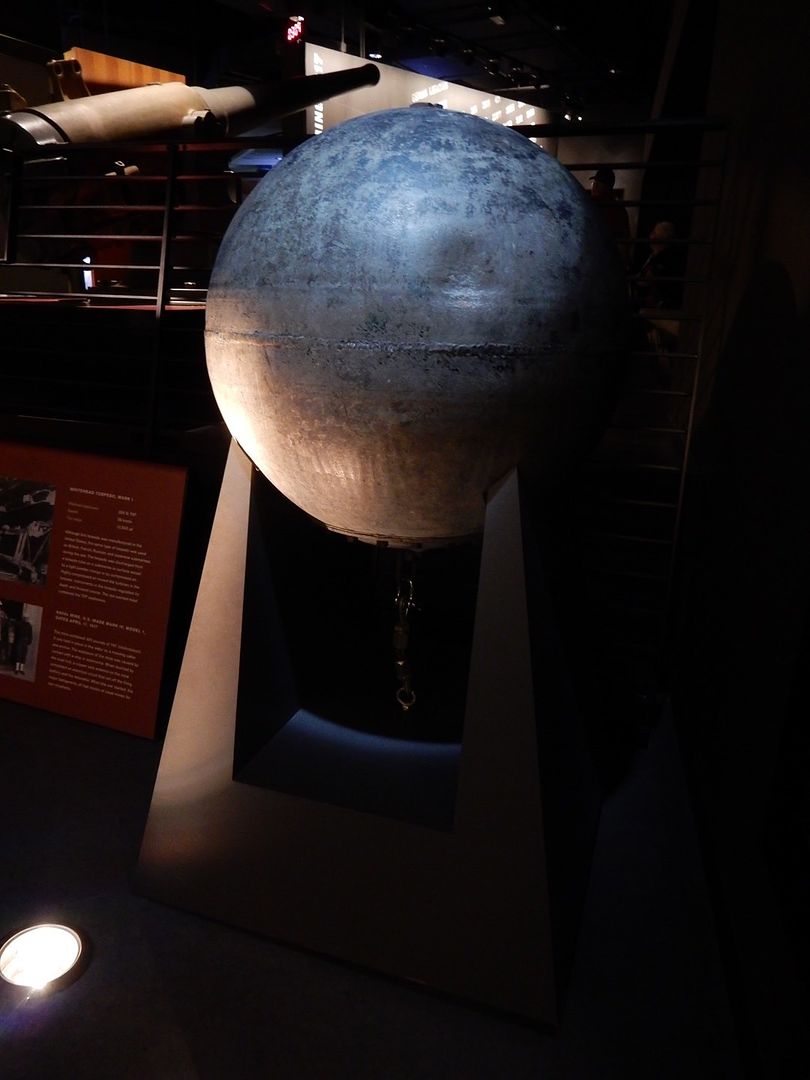
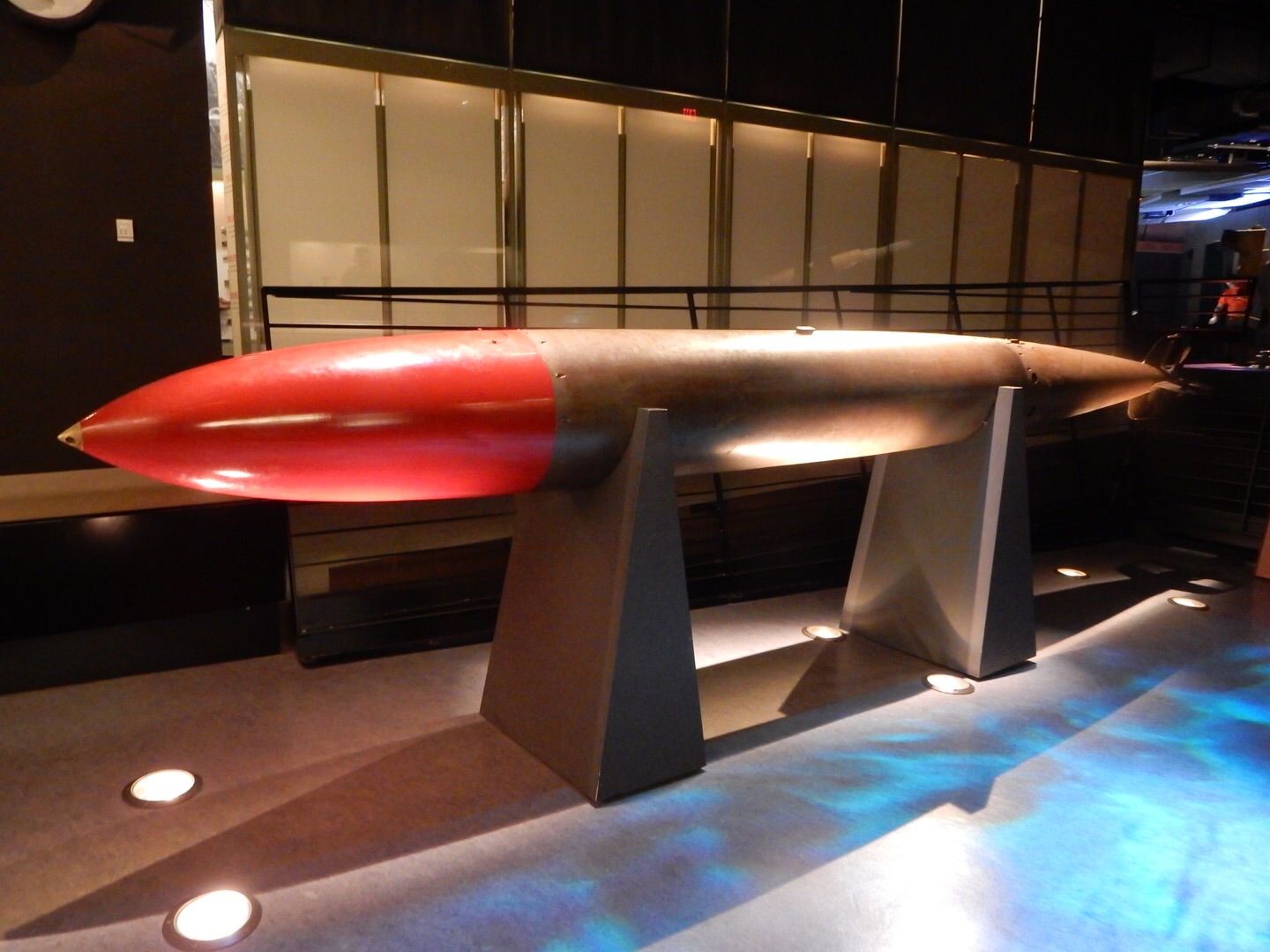
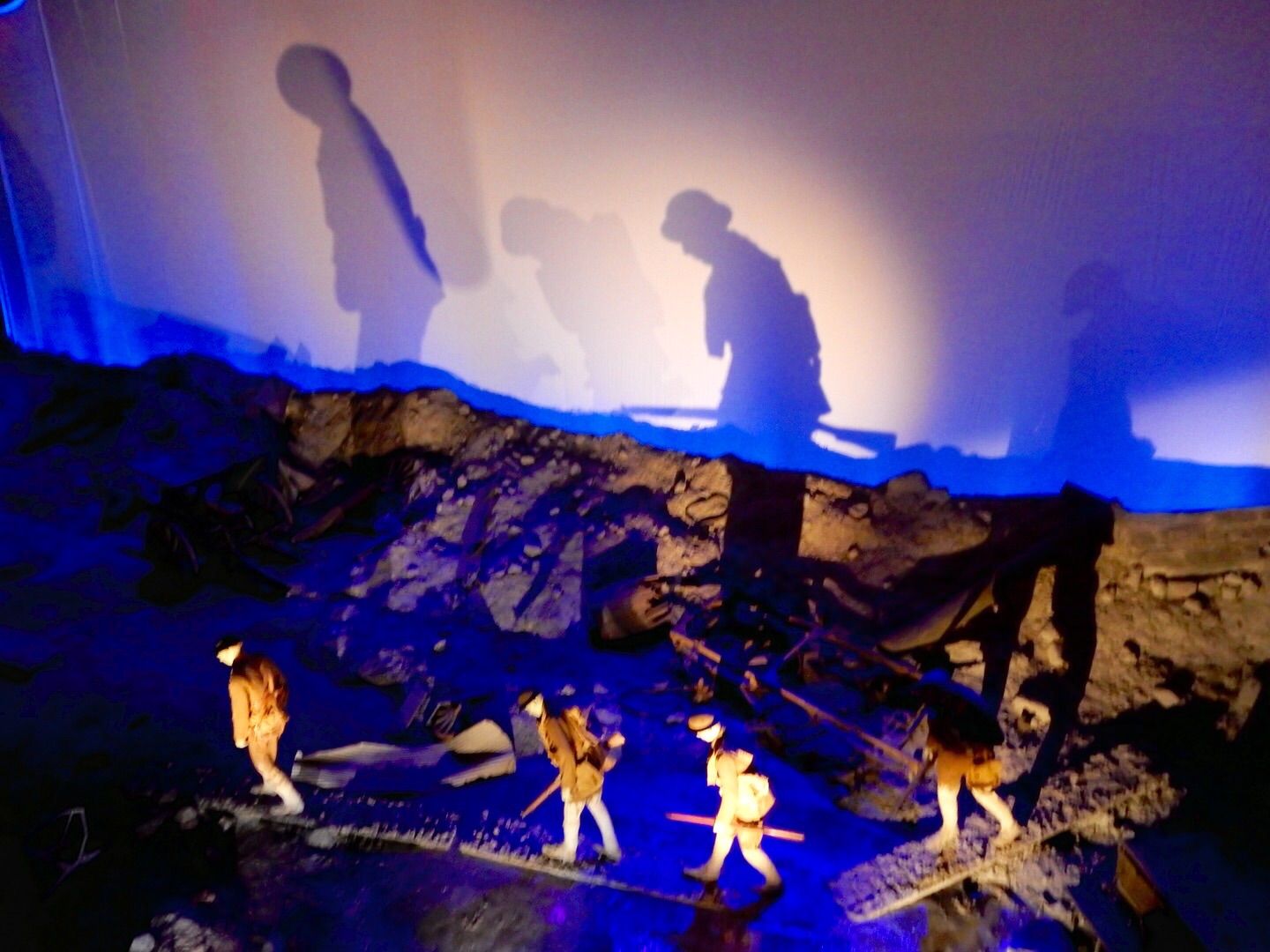
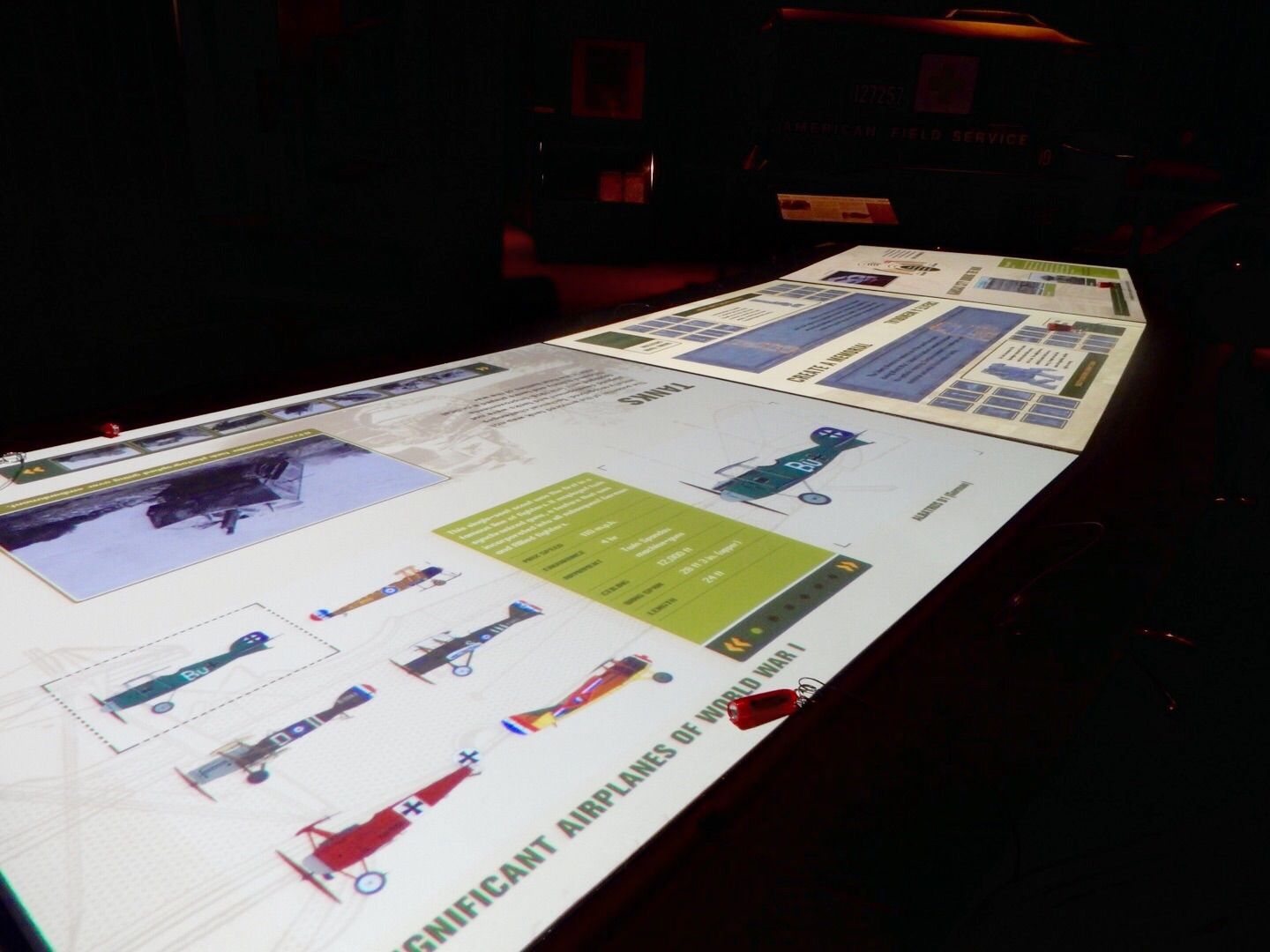

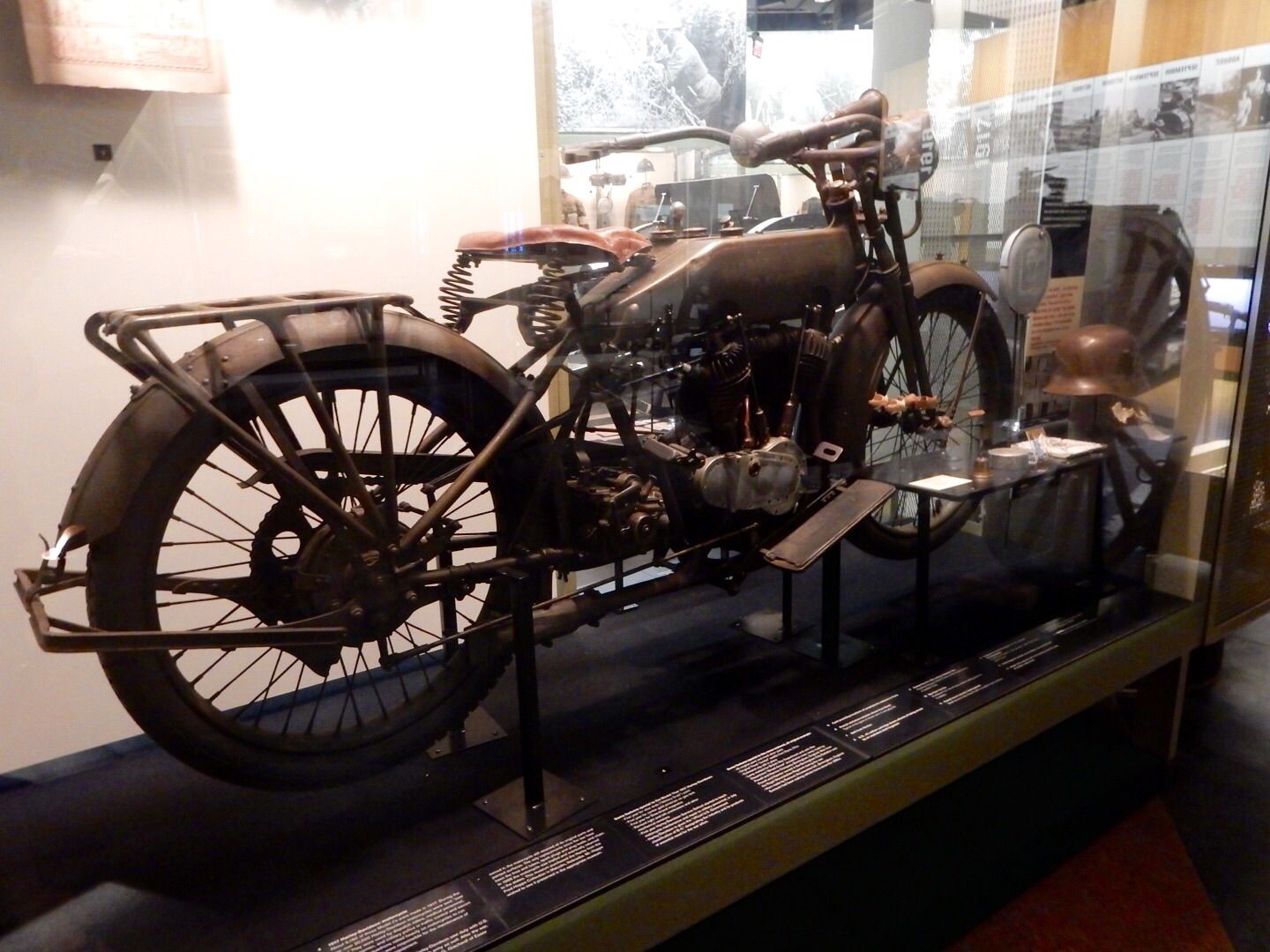
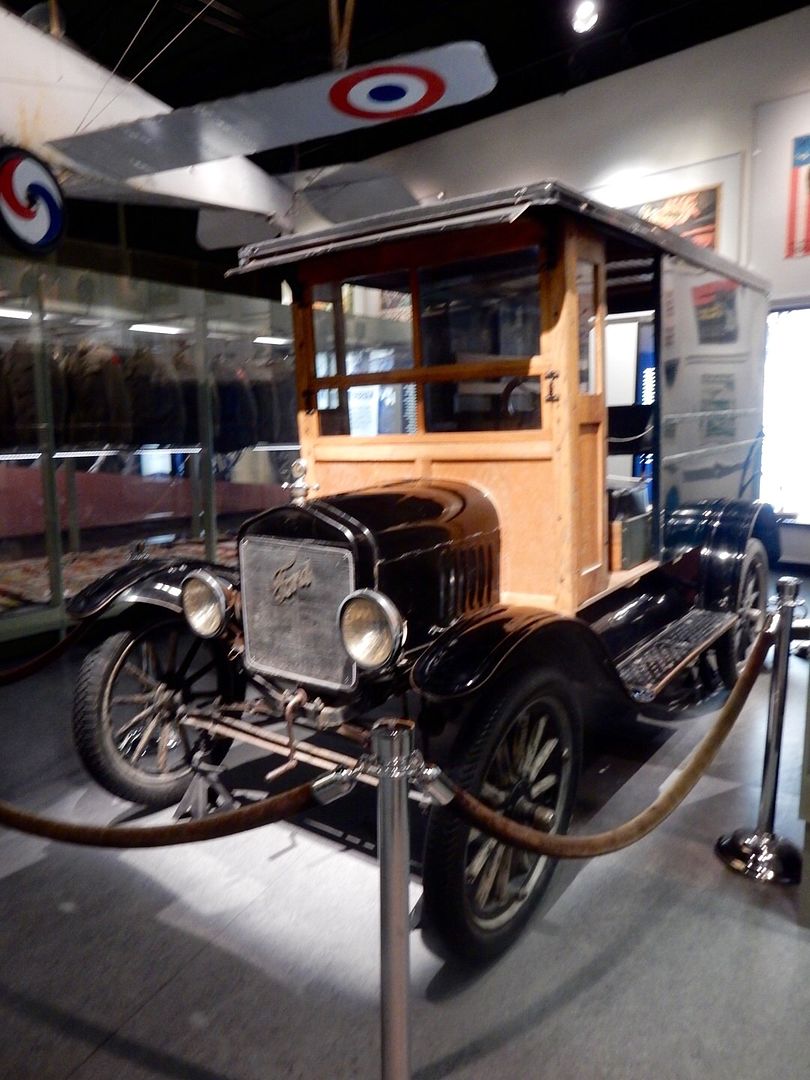
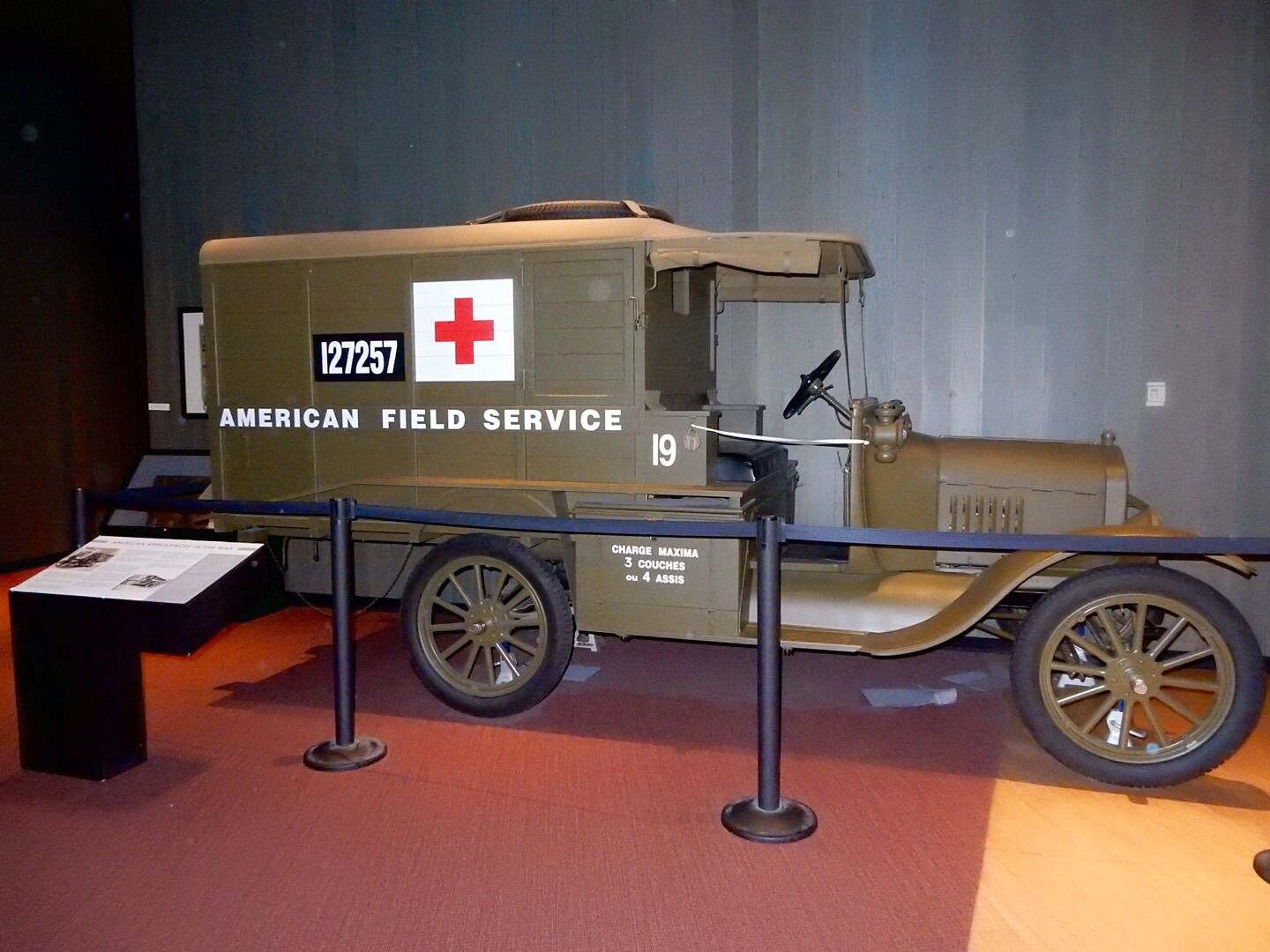
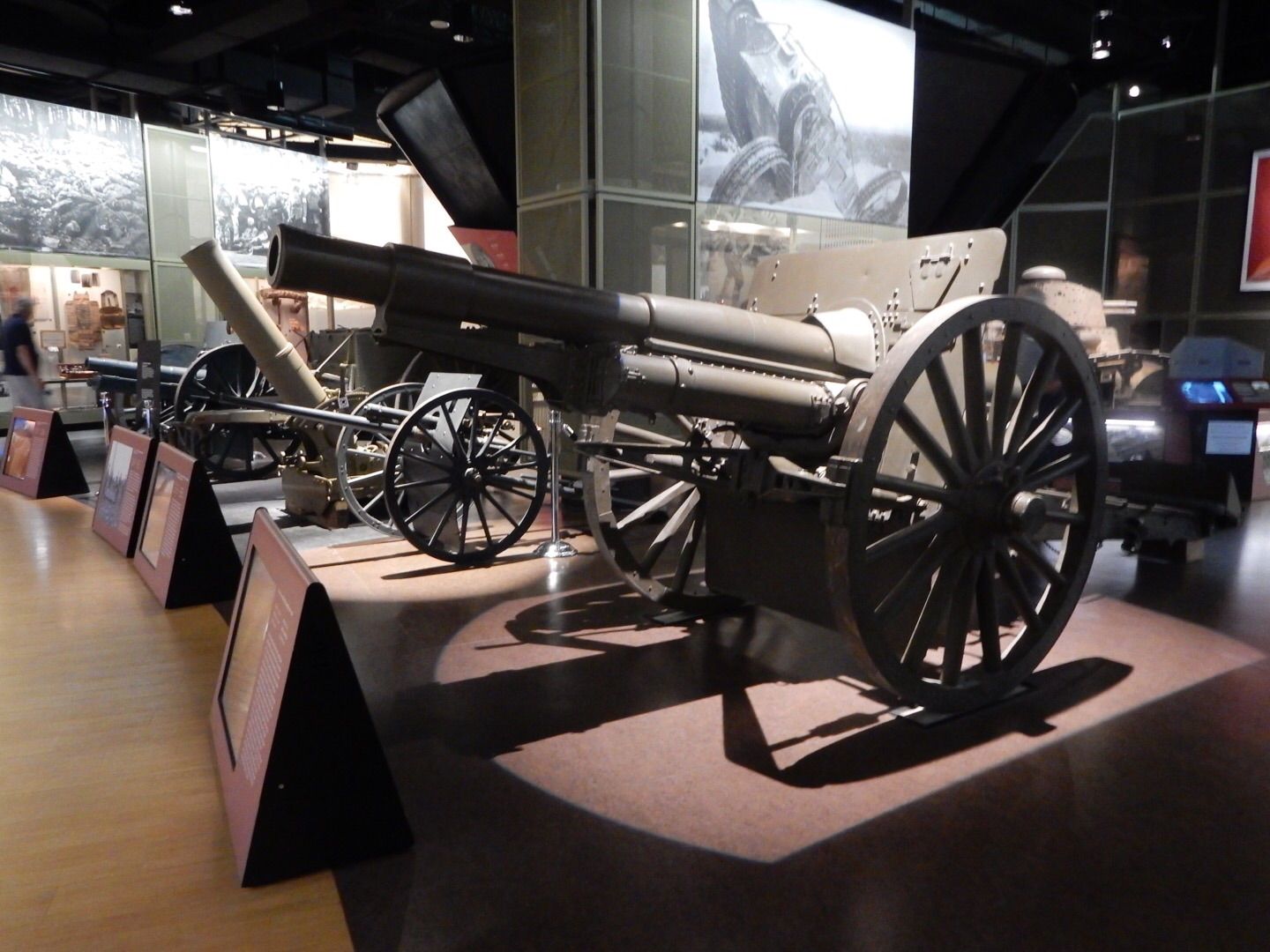
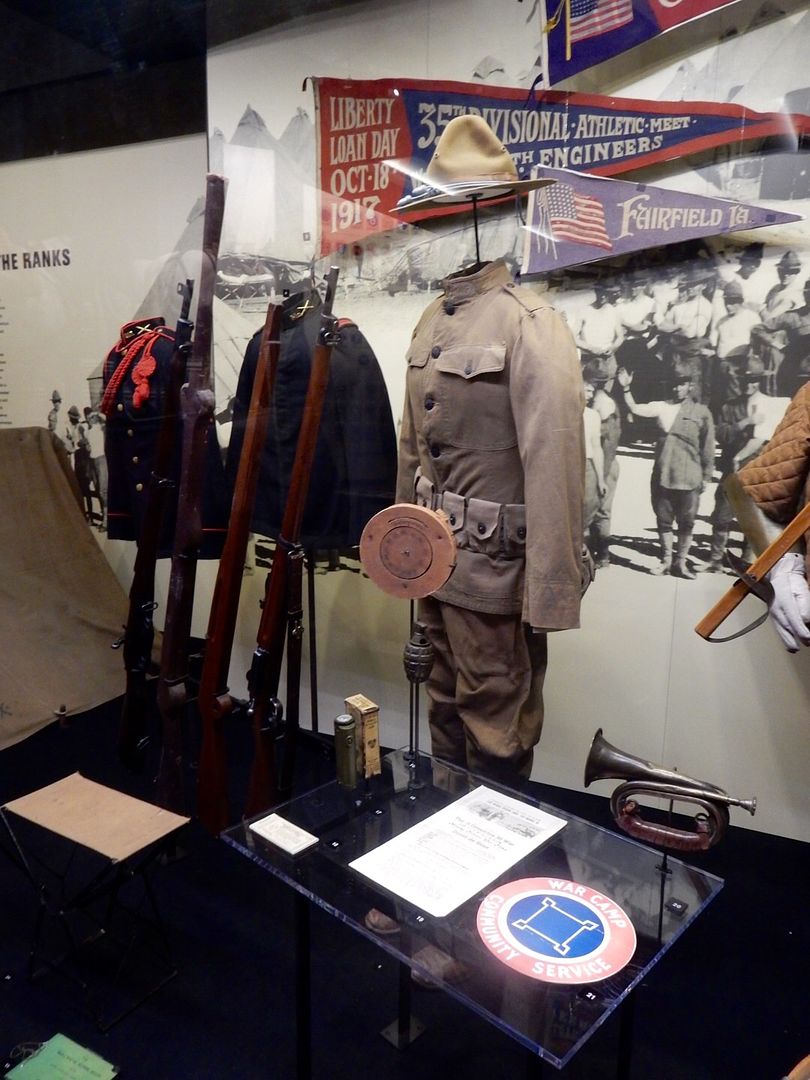

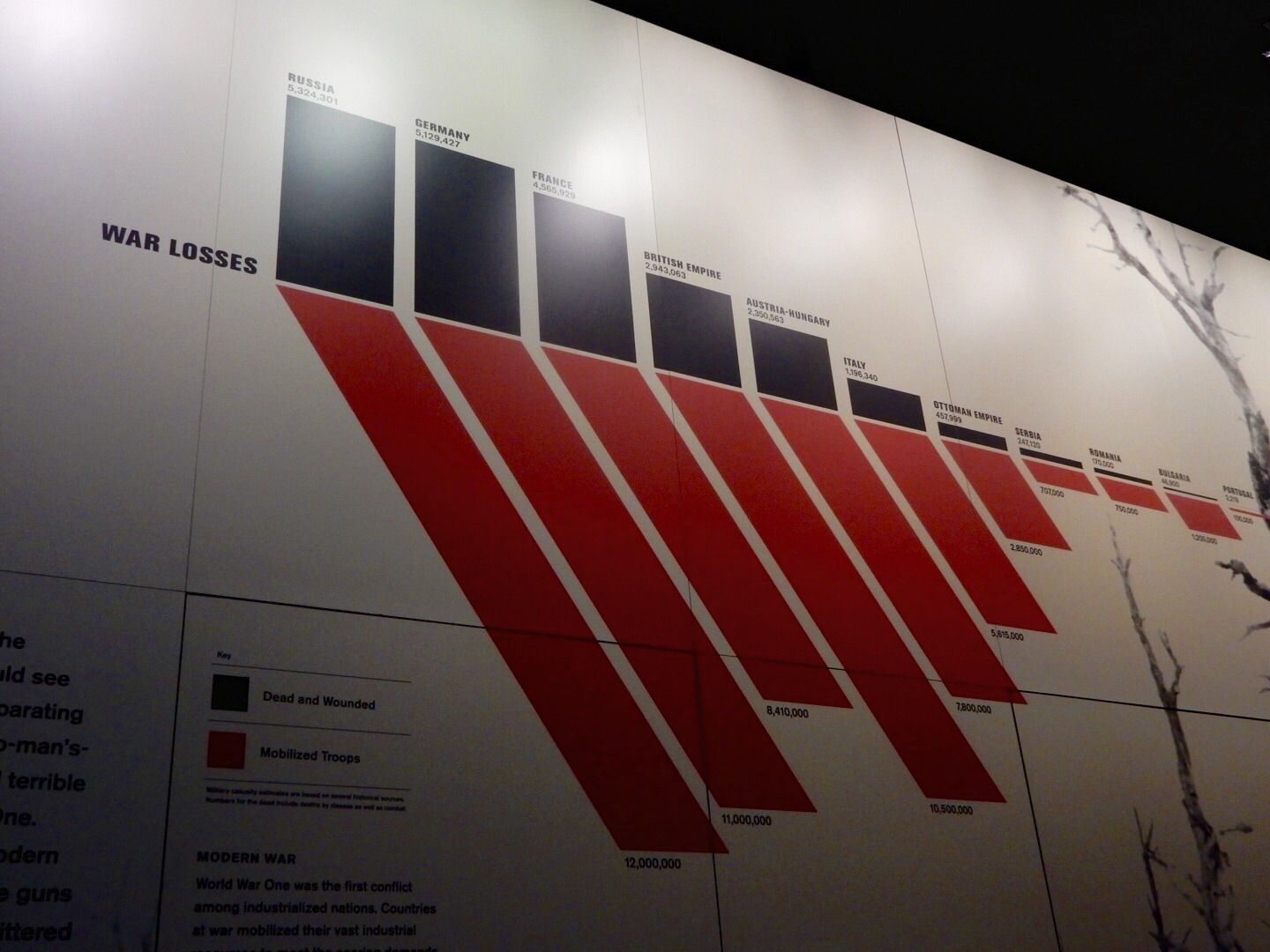
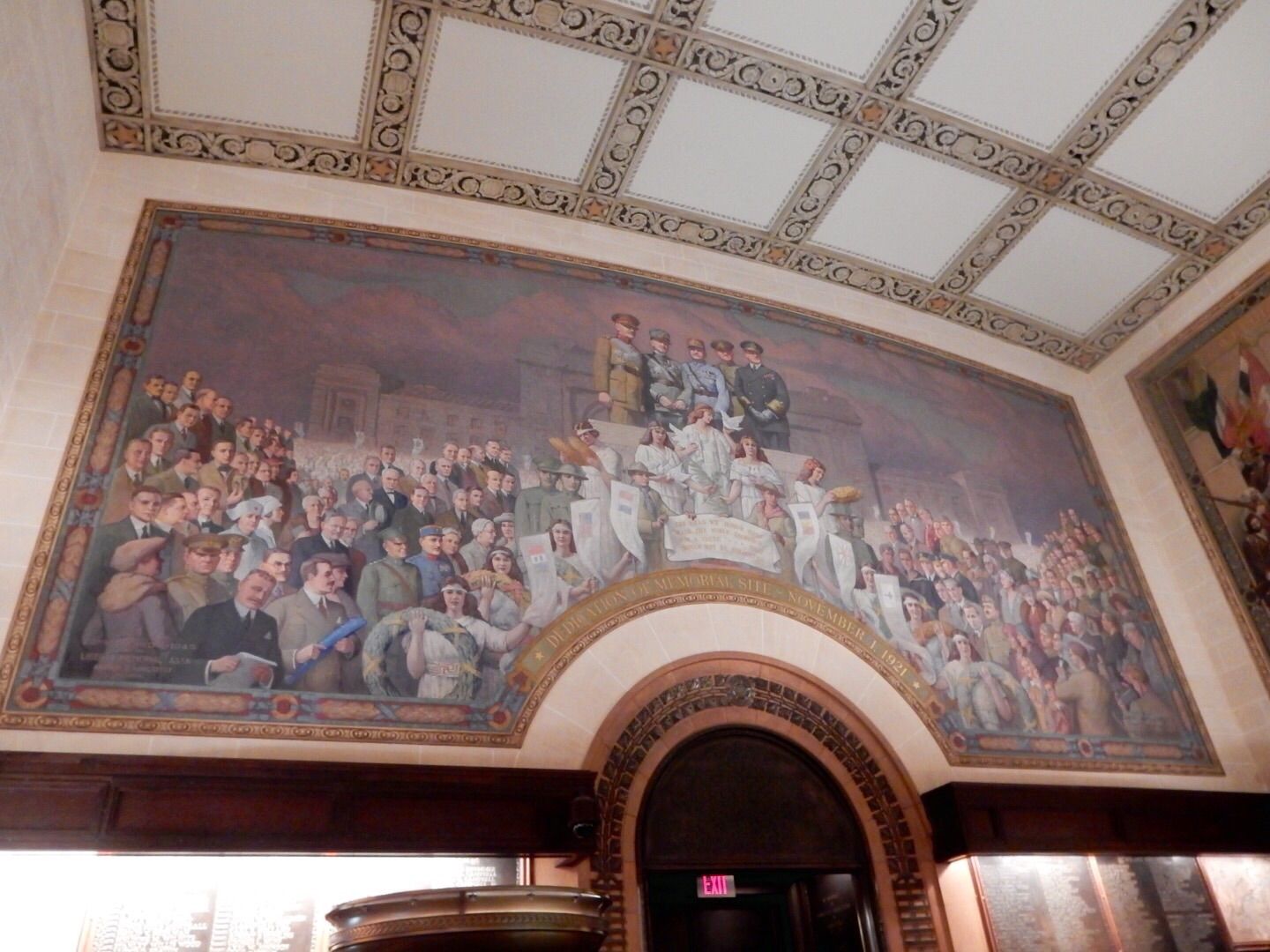

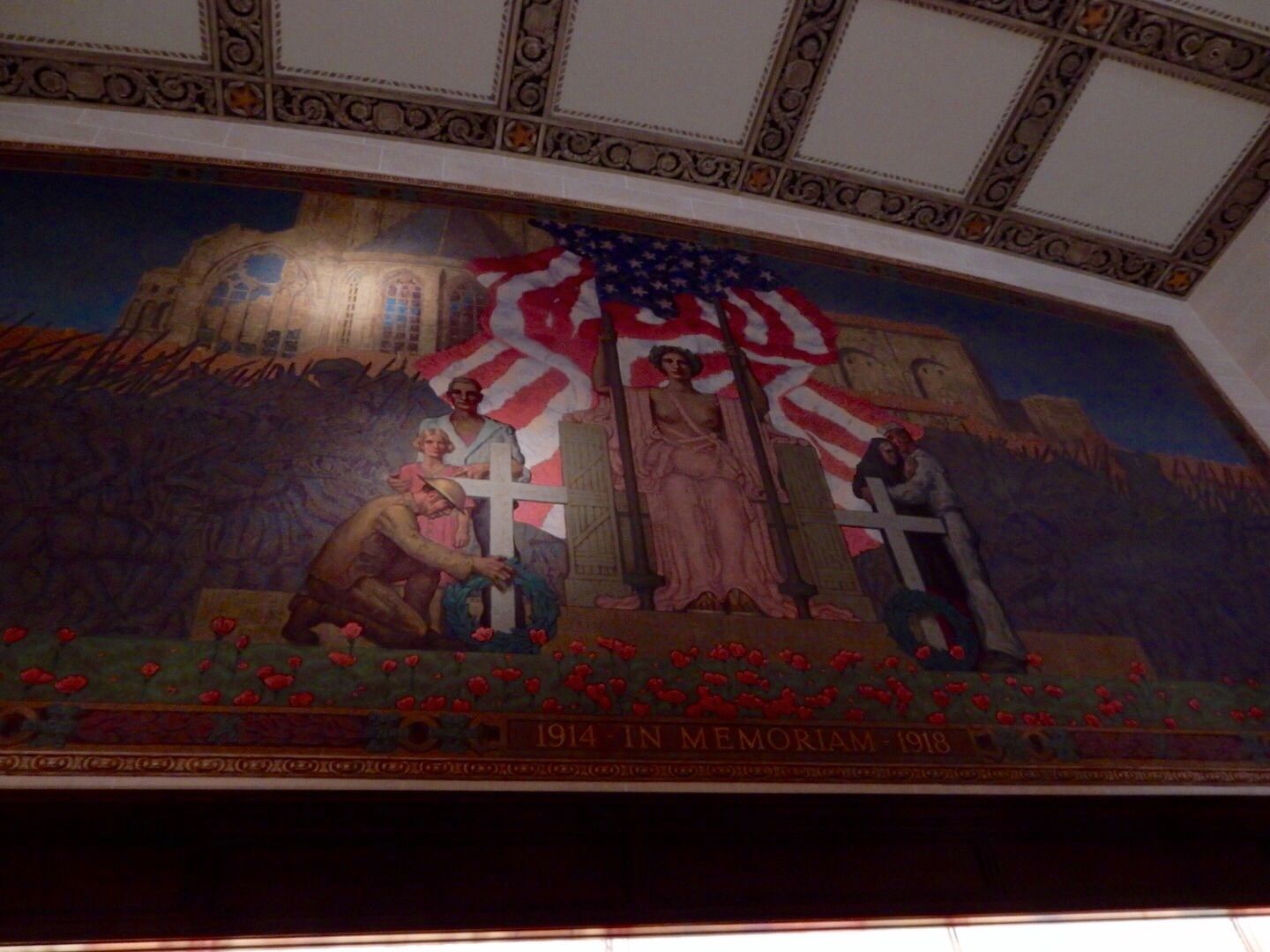
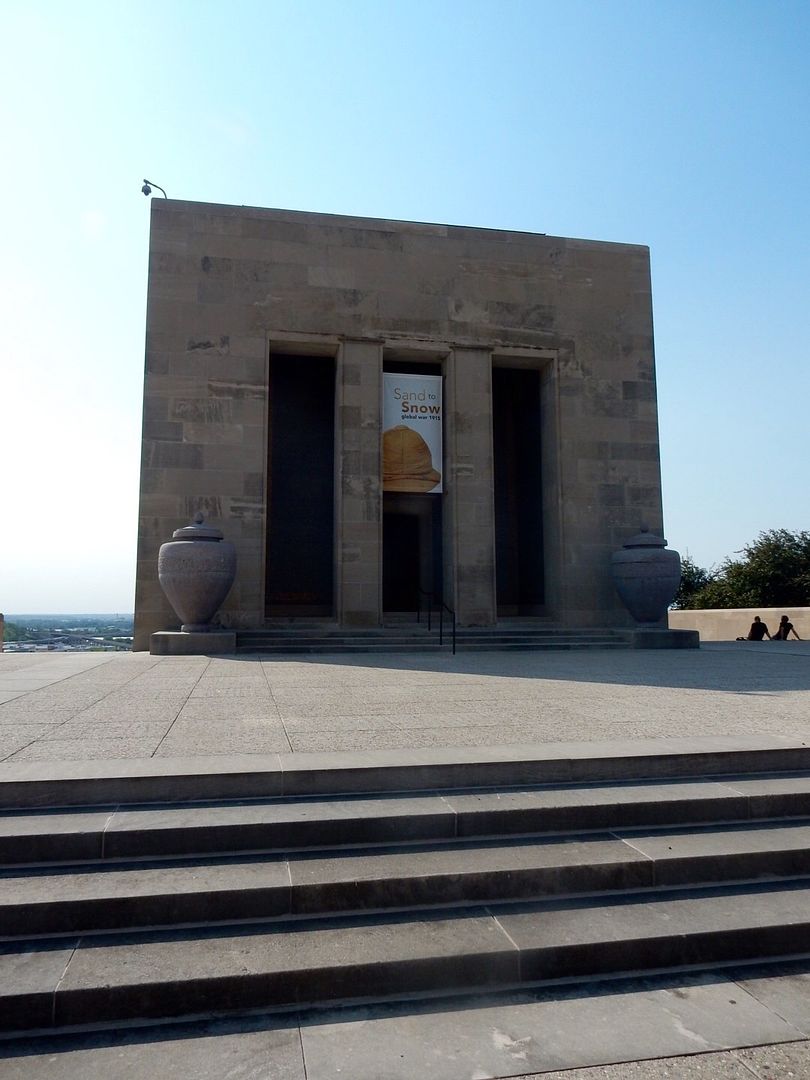
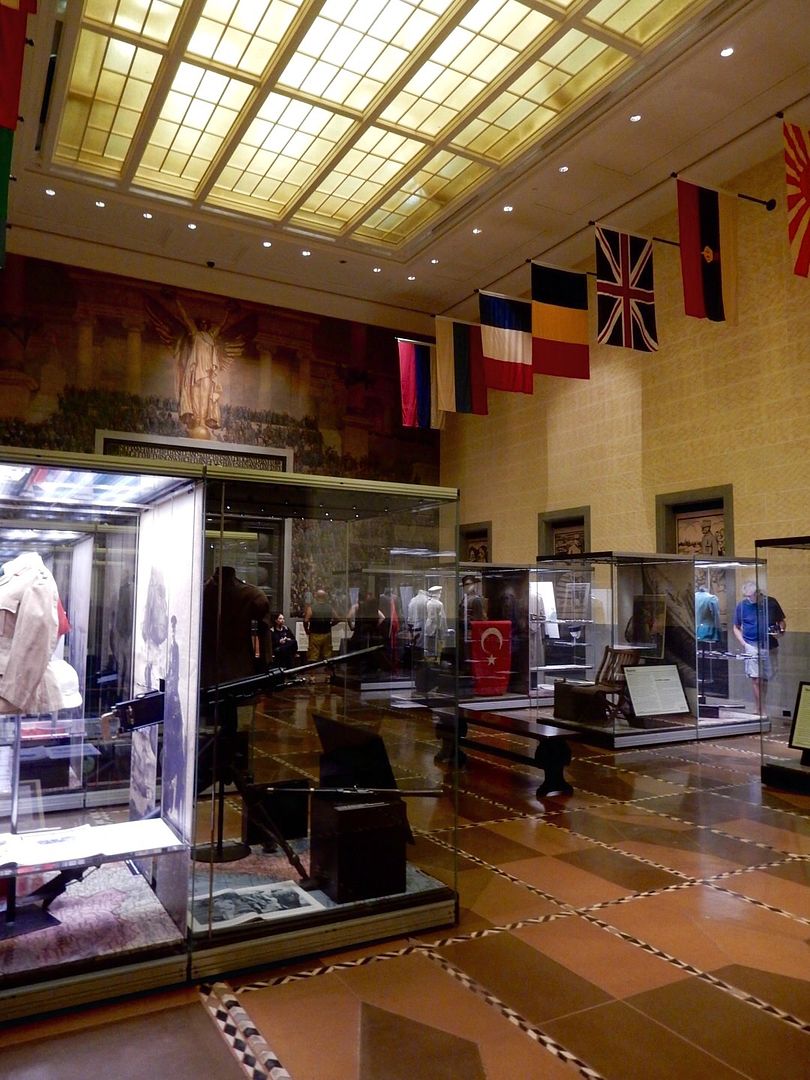

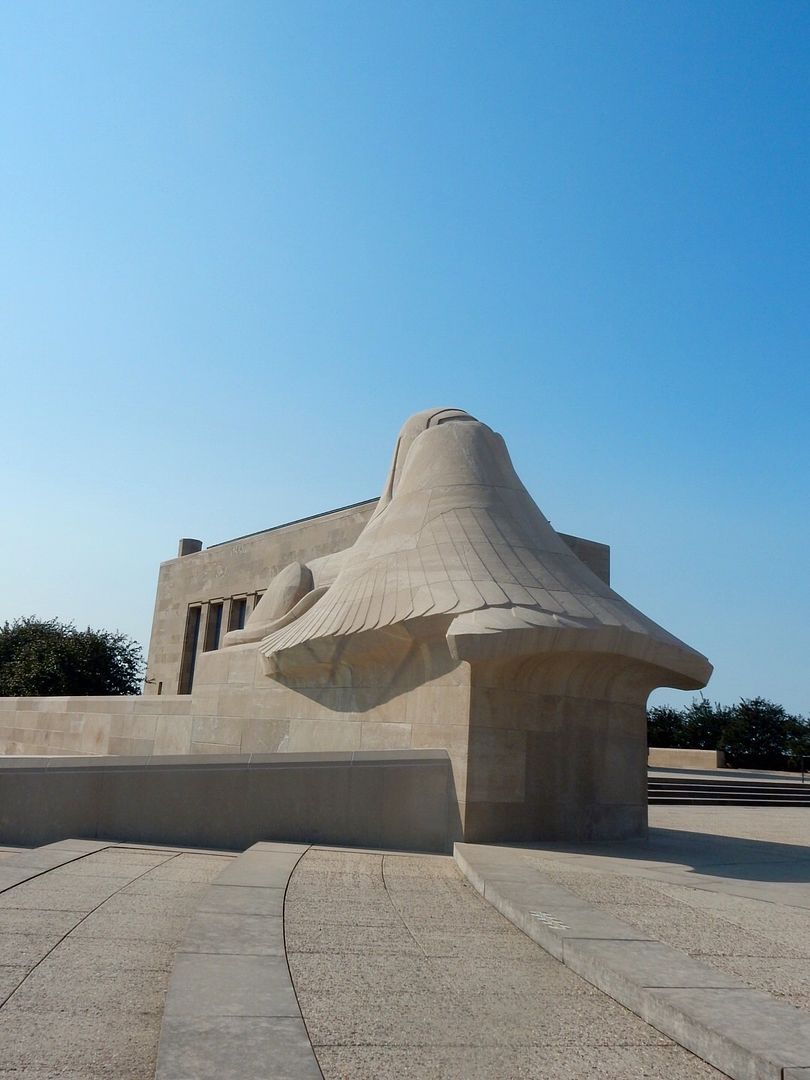
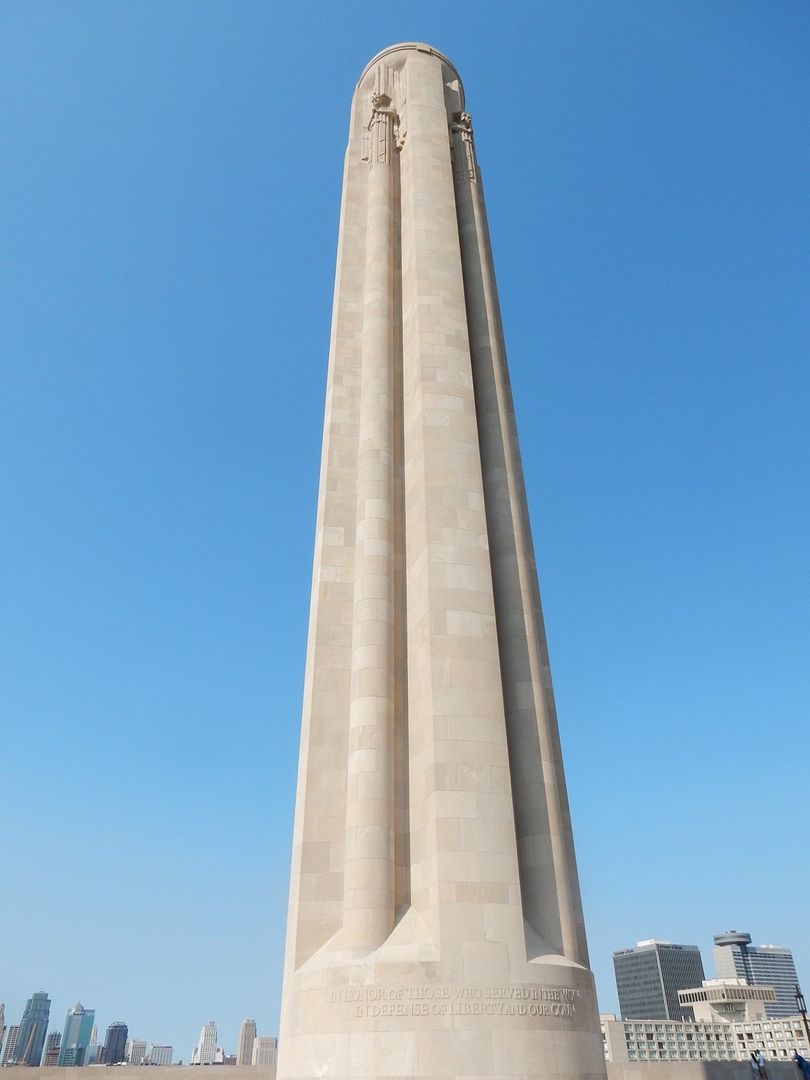
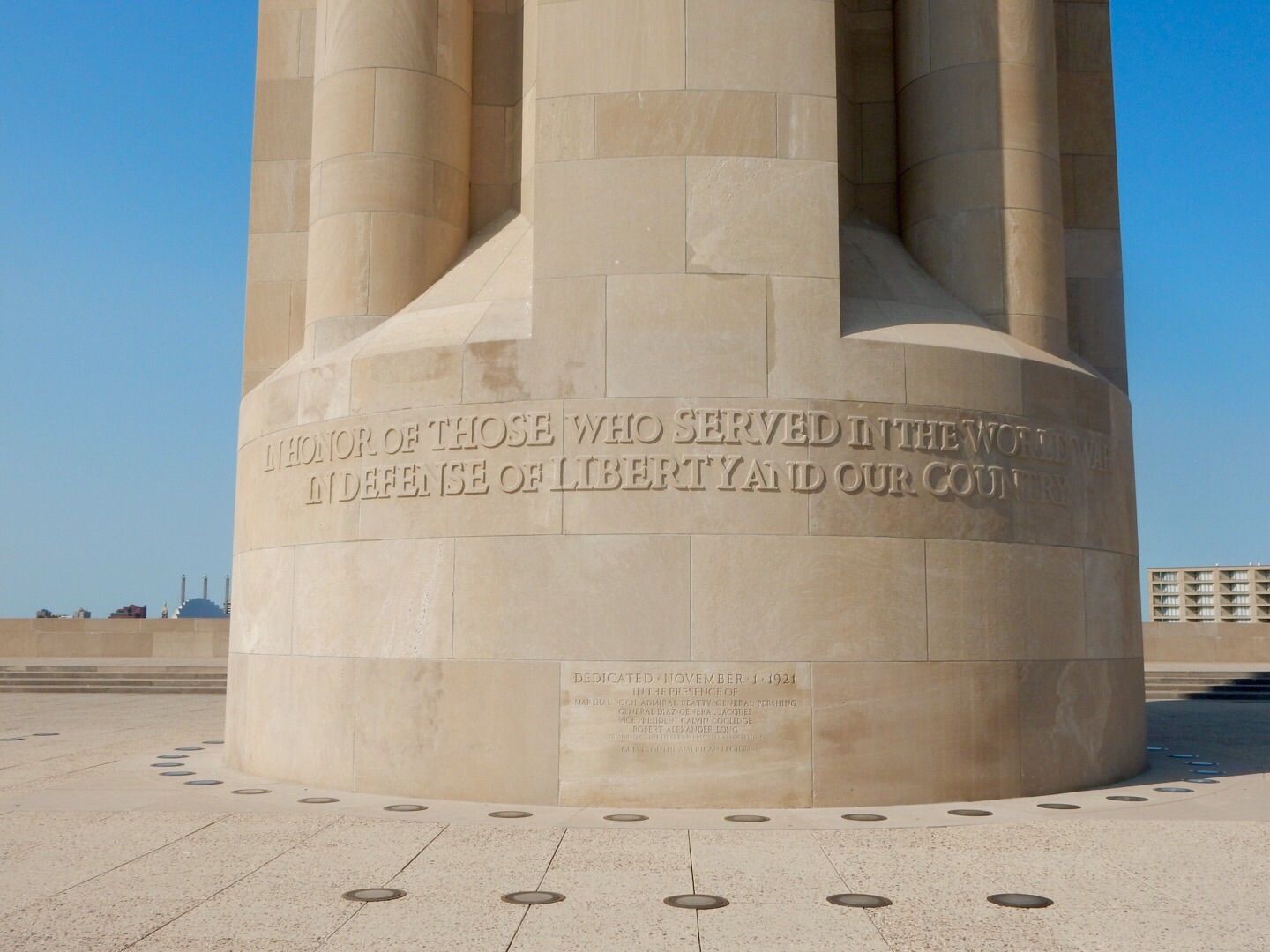
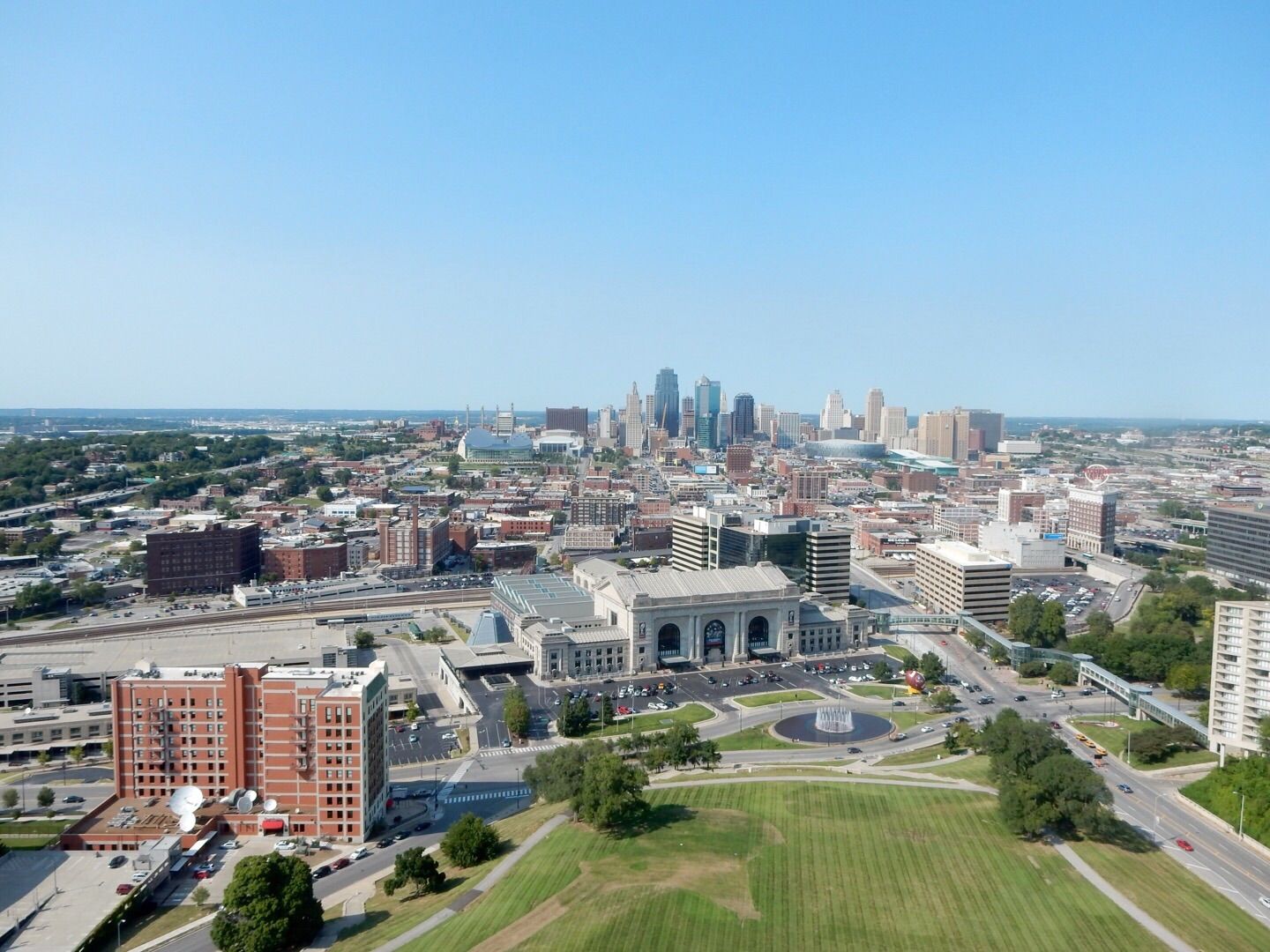



No comments:
Post a Comment